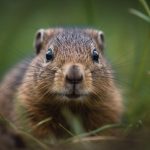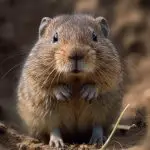Gopher Habitat: Where Do Gophers Live?
Found throughout the United States, gophers can become quite a headache if you got soft-textured soil and vegetation anywhere near your house. Gophers are notorious for damaging crops, ornamental plants, and trees as they feed on their roots and tubers.
If you’re a typical farmer or gardener in the US, you must know where do gophers live to implement strategies and protect your vegetation. This way, you’ll be able to minimize your economic losses.
Moreover, gophers can create unsightly mounds and damage lawns, gardens, and irrigation systems, which requires a call for a pest control expert or DIY pest control. Understanding their habitat preferences will help you take effective and targeted pest prevention measures.
Let’s dive deep into the habitat behavior of gophers. We will also find out the geographic distribution, burrowing habits, diet, and much more of gophers for effective pest control.
GOPHER HABITAT PREFERENCES
There are about 34 species of gophers, and many of them have different habitat preferences. In general, all gopher species are fossorial, so they live in their underground burrows.
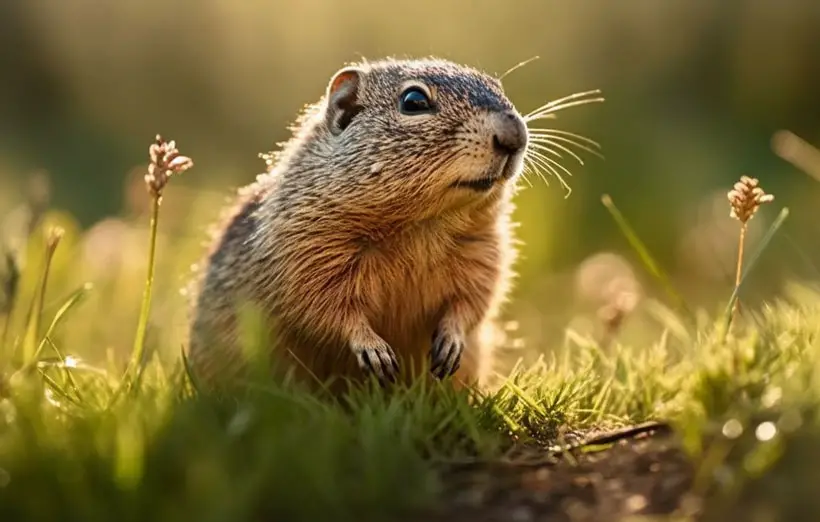
Types of Environment
In Central and North America, the most common species are pocket gophers (Thomomys spp).
These gophers are well-adapted to live in a wide range of environments, including grasslands, woodlands, and agricultural lands. About 13 gopher species are available all over the United States.
If an area has enough soil to dig a burrow, it can be an ideal habitat for gophers. They can survive in any type of climate, from dry to extremely hot. You’ll find them in areas at sea level and even in extremely cold locations in mountainous areas. Gophers inhabit the grasslands, deserts, pastures, meadows, forests, rainforests, gardens, and crop fields.
To make complex burrow systems for long-term stay, gophers prefer well-draining soils with sufficient moisture. However, the soil must have a strong structure so that the burrows can be well-formed and durable.
Knowing the habitat preferences of gophers is essential for professional gopher control.
GEOGRAPHIC DISTRIBUTION
As each species have a specific habitat preference, the geographic distribution of gophers varies widely. Gophers are distributed throughout much of the United States. You can locate some species in Canada and Mexico as well.
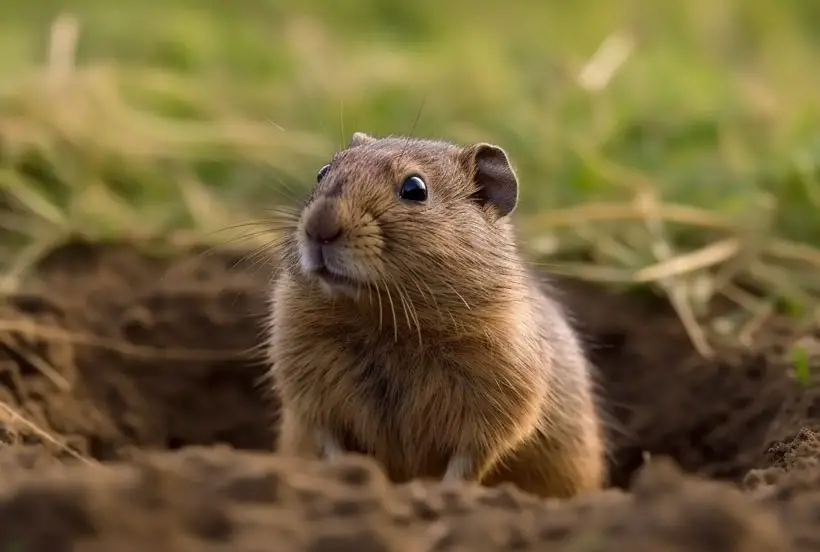
In the US, gophers are most commonly found in the western states, including California, Oregon, Washington, Nevada, Utah, Colorado, and Arizona. A few species also inhabit the Midwest and in states like Illinois, Iowa, and Nebraska.
As for Canada, gophers are primarily found in the western provinces, including British Columbia, Alberta, Saskatchewan, and Manitoba. The rodent habitats in different environments in Mexico, especially in the desert and grassland regions.
Factors That Influence Gophers’ Habitat Preference
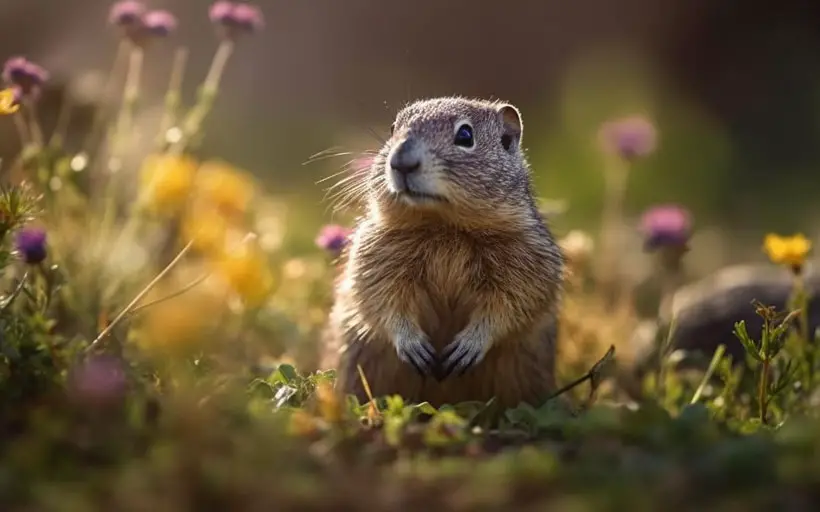
Here are a few factors that influence the habitat preferences of gophers-
Type and Condition of Soil:
As mentioned, gophers create extensive burrow systems to protect themselves from harsh environmental conditions and predators. Therefore, the soil gophers usually dwell in must be loose and easy to penetrate.
Areas like pastures, grasslands, and gardens have well-drained and loose soil that gophers to dig through.
But again, the type of soil gophers choose for habitation varies depending on the species. Plain’s pocket gophers (Geomys bursarius) dwell in sandy and silty types of soils.
Similarly, northern pocket gophers (Thomomys talpoides) are abundant in deep and sandy soil types of the plains. You can also find them in shallow gravel of some mountainous areas.
Availability of Food Sources:
Gophers prefer areas with a diverse array of plants, as they primarily feed on roots, tubers, and other plant materials. Hence, your crop field and garden are ideal habitats for gophers as they provide them with a sufficient food supply.
Presence of Predators:
When choosing an area for burrowing, the presence of predators is an important thing to consider. Gophers are small animals that are prey to predators like snakes, owls, and coyotes. So, they pick densely vegetated areas as their habitat to protect themselves against such threats.
Unlike other rodents like ground squirrels and moles, gophers spend most of their time in burrows. So, y[4] [RH5] ou’re less likely to spot them roaming around your lawn in daylight. However, you might catch sight of them while they are foraging and caching food.
GOPHER BURROWING HABITS
One of the most fascinating things about gophers is their borrowing habits used to create an intricate underground network. Pocket gophers use their claws and incisors to loosen the soil and construct these extensive burrow systems. They push the loosened soil out of the burrow with their forefeet and chest.
You can easily identify gopher burrows from the fan-shaped mounds created from the deposited soil. Typically, the mounds are 4 to 6 inches high and about 12 to 18 inches wide. However, the size can vary depending on the species.
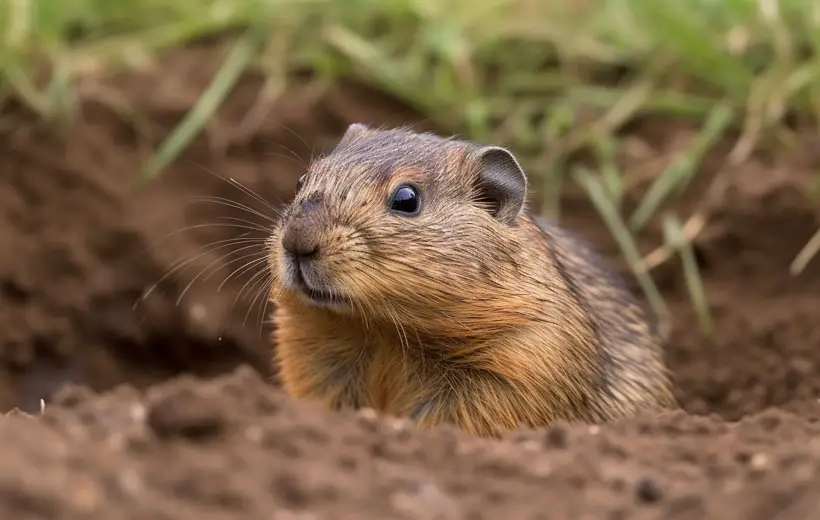
Other rodents, such as ground squirrels and moles, also make underground burrows. [6] [RH7] What makes gopher burrows different is that a complete extensive network is done by a single gopher. On the other hand, squirrels and moles live in groups, and each burrow is often part of a larger, interconnected burrow system.
Besides, gopher burrows are more complex, consisting of a main entrance and multiple chambers for nesting, food storage, and waste disposal. Other rodents make less extensive burrows with a main entrance, an escape entrance, and a nesting chamber.
Learning about burrowing habits and studying the unique features of gopher burrow systems are the most effective ways to detect gophers.
Let’s take a look at the quick comparison between gophers and burrowing animals such as moles and ground squirrels-
| Burrowing Habits and Features | Gophers | Moles | Ground Squirrels |
|---|---|---|---|
| Burrowing Habits | Dig deep, straight burrows for access to roots and tubers | Dig shallow tunnels just below the surface, as well as deep burrows | Dig complex burrow systems with multiple entrances and exits |
| Soil Displacement | Push soil out of the entrance to the burrow, creating a distinctive crescent-shaped mound | Leave ridges or mounds of soil on the surface | Create complex networks of tunnels that may collapse over time |
| Tunnel Depth | 2 to 6 feet deep | Ranges from a few inches to several feet | Up to several feet deep |
| Purpose of Burrows | Accessing food sources and protecting themselves from predators | Foraging for food, nesting, and avoiding predators | Providing shelter and protection from predators |
Now, let’s take a deeper look at the different parts of the burrow network of gophers.
Main Burrow:[8] [RH9]
In general, the main burrow system is generally the deepest and most extensive part of the network. It extends to depths of 2 to 6 feet (0.6 to 1.8 meters) below the ground.
Also, the whole network can stretch horizontally for several hundred square feet. All the main burrow houses are sleeping and nesting areas, along with food storage chambers. These burrows and chambers might extend as far down as 6 feet.
Lateral Burrows:
Gophers construct lateral burrows branching off the main burrow. These tunnels run closer to the surface within 6 to 12 inches of the ground. Lateral burrows are primarily used to access the roots and tubers of plants.
Feeding Burrows:
Gophers often create short, temporary feeding burrows that are extensions of the lateral burrows. These burrows are typically 12 inches below ground. As the name suggests, gophers use these feeding burrows to quickly emerge their bodies from the burrow and feed on the above-ground vegetation.
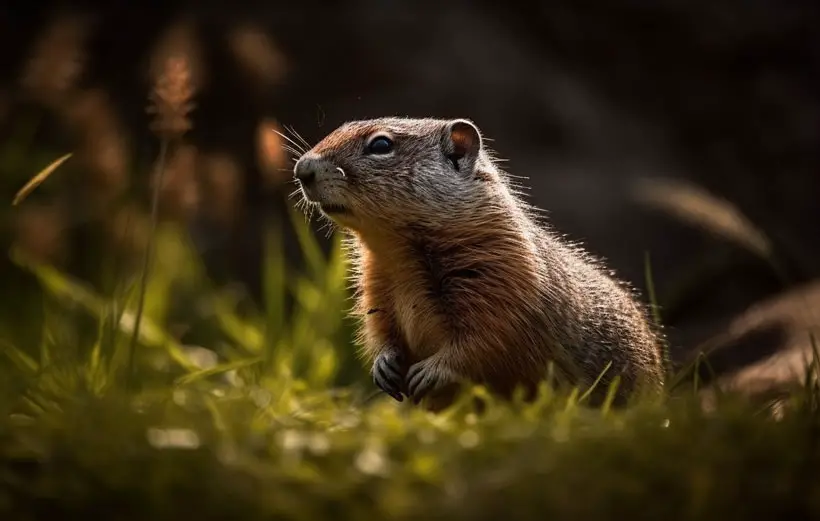
Gopher burrowing has both negative and positive impacts on the environment and other wildlife species. Which includes-
- Burrowing promotes soil aeration and turnover. This way, gophers enhance soil fertility and structure. Besides, the tunnels help in mixing the soil layers and incorporating organic matter, benefiting plant growth
- The extensive tunnel system of gophers provides shelter and habitat for various other species, such as snakes, amphibians, insects, and small mammals. This increases the overall biodiversity in the area
- As gophers feed on plant roots and tubers while digging burrows, they can cause significant damage to agricultural crops. It often leads to reduced yield and financial losses for farmers
- Gopher burrows destroy the structural integrity of the soil, causing significant lawn damage. They can also cause aesthetic and functional problems in golf courses and other landscaped areas
GOPHER DIET
As Gophers are strictly herbivores, they live on plant matter, including leaves, flowers, roots, bulbs, and seeds. They occasionally eat vegetables like lettuce and carrots, whereas eating seeds or fruits are very rare for pocket gophers.
On the contrary, Ground squirrels and moles are omnivorous. These rodents eat a diet consisting of fungi, seeds, nuts, and various fruits. Also, they occasionally consume insects and other small animals.
Pocket gophers forage for food primarily within their extensive underground tunnel systems. They feed mainly by creating a series of feeding tunnels below the ground.

While digging these tunnels, gophers come across various plant roots and tubers. They use their sensitive whiskers to detect the plant materials in the dark underground environment. With the help of their sharp and curved incisors, gophers gnaw through roots and tubers.
Occasionally, gophers may venture above ground to forage, especially when food is scarce underground. They can pull small plants and grasses into their burrow openings using their teeth and forelimbs. These little rodents store food in their cheek pouches and then consume the plant material later in the safety of their tunnels.
Here’s the main diet of most gopher species:
| Food Types | Examples |
|---|---|
| Grass | Needle and thread grass, scouring rush grass, mosquito grass, and eastern prickly pear cactus |
| Forbs | Dandelion, Lupine, Goldenrod, Yarrow, Chicory, and Wild onion. |
| Plants | Eastern Prickly Pear or Devil’s Tongue, Milkvetch, Scarlet Globemallow, or Cowboy’s Delight |
| Roots | Carrots, sweet potatoes, and beets |
| Tubers | Potatoes, yams, Jerusalem artichokes |
| Vegetables | Lettuce, spinach, kale, chard, broccoli, and cabbage |
Different Types of Grasses:[10]
According to an extensive study, about 64% of the gopher’s diet consists of different types of grasses. Gophers typically consume the roots and shoots of the grass.
Depending on the availability of the species, the gopher diet consists of needle and thread grass (22%), scouring rush grass (14%), mosquito grass (12%), and eastern prickly pear cactus (9%).
- Forbs[11] [12] : In case you don’t know, forbs are non-grass herbaceous plants, such as dandelions and clover. According to the above-mentioned research, gophers prefer forbs over grass during the spring and summer as these plants are more succulent in these seasons. Forbs that gophers typically eat include Dandelion, Lupine, Goldenrod, Yarrow, Chicory, and Wild onion.
- Other Plants: Apart from grass and forbs, gophers eat other plants too. Eastern Prickly Pear or Devil’s Tongue, Milkvetch, Scarlet Globemallow, or Cowboy’s Delight are the three most favorite plants of gophers. Above-ground parts of various plants, such as leaves and stems, make up about 26% of the gophers’ yearly diet.
- Vegetables: Gophers are known to eat the roots and tubers of various vegetables, like carrots, beets, and potatoes. They also eat lettuce, spinach, kale, chard, broccoli, and cabbage.
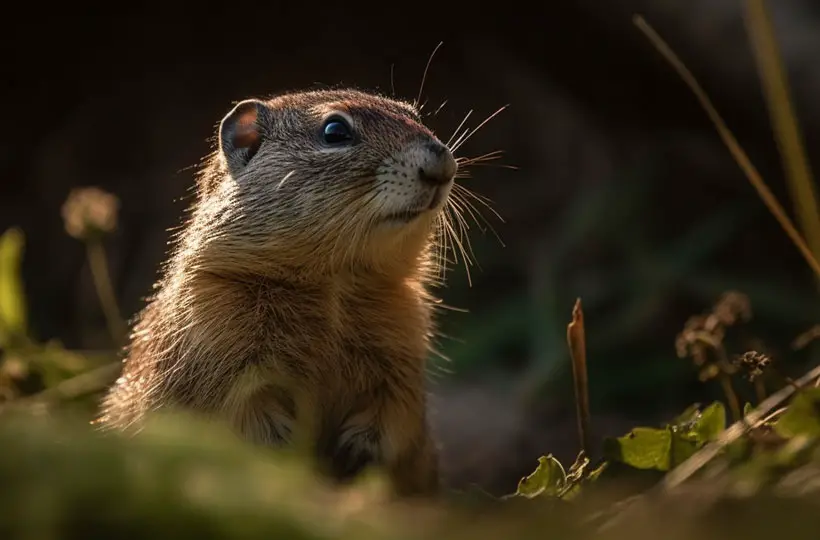
If you’re a gardener or homeowner, gopher feeding habits can harm your plants and grasses in many different ways, including-
- As gophers feed on the roots and other plant parts, they can cause considerable damage to your garden. Consistent feeding can kill or weaken your plants. Besides, these rodents decimate vegetable gardens, flower beds, and ornamental plants
- The underground gopher tunnels will end up damaging the soil structure of your place. Gophers displace large amounts of soil and create mounds on the surface. These piles of soil make it difficult for plants to establish or spread
- Even if you don’t have a garden, these backyard pests can totally destroy your lawn and decrease the curb appeal of your house. The underground tunnels can lead to uneven and collapsing surfaces. Gopher mounds also create unsightly bare patches on the lawn that are often difficult to repair
- However, if you want to control gopher invasion, be sure to follow the trapping regulations of your state or let the pest control companies take care of them
FREQUENTLY ASKED QUESTIONS
Still, some confusion may hesitate you about Gopher living. The following questions and answers will clear this confusion.
1. Do gophers hibernate?
No, gophers don’t hibernate during the winter. Instead, they take shelter from the cold deep inside their burrows. If the temperature keeps dropping, gophers keep burrowing even deeper in the ground below the frost line.
2. Are gophers harmful to humans?
Although gophers aren’t directly harmful to humans, they can damage properties and spread diseases. Gophers feed on the plants in your garden or farm and eventually kill them, causing monetary damage.
Besides, these garden pests can carry common rodent diseases such as rabies, hantavirus, leptospirosis, and plague.
3. How deep do gophers burrow?
The main tunnel of a gopher burrow can be 6-12 inches deep. Gophers dig lateral tunnels somewhat deeper reaching up to 6 feet deep, depending on the type of soil.
WRAPPING UP
So, now you know where gophers live. To provide you with a clear idea of the habits and habitats of gophers, we have discussed the geographical distribution, diet, and burrowing habits of pocket gophers.
All the details regarding gopher habitat are essential for effective pest control and wildlife removal management. To prevent gopher damage in gardens and lawns, you can try different types of trapping methods or apply suitable toxicants.
However, be sure to do extensive research before you choose either of these methods.


